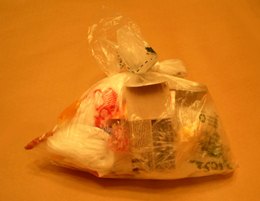Leave No Trace
(Minimum Impact Camping) |
Take nothing but Pictures,
Leave nothing but Footprints
You must have heard this before, "Take nothing but pictures, leave
nothing but footprints". It is so easy to say than to actually
do it. I have to admit that I sometimes make mistakes in this
"Leave No Trace" practice. But at least I try my best every time.
Human by nature make unintentional mistakes. Therefore, it becomes
important to educate ourselves about practising "leave no trace" to
preserve the pristine wilderness area.
There are a few principles that I wanted to share with you:
- Plan Ahead and Prepare
- Camp on Durable Surfaces
(or Snow and Sand)
- Dispose of Waste Properly
- Leave what You Find
- Minimize Campfire Impacts
- Respect Wildlife
- Be Considerate of other Backcountry Visitors
What should I do?
No trace camping can be achieved by using modern man-made fabrics
for shelter, by cooking with gas stoves, and by paying particular
attention to what you do in and around your campsite. In other words,
when camp is broken, there should be absolutely no sign of human use.
Special care must be taken in alpine and sub-alpine areas. These are
among the most fragile ecosystems because of the severe conditions and
the short growing season. What may seem like a harmless activity can
cause long-term damage.
For example, a tent is set in the same spot in an alpine meadow for a
number of days. The damaged plants underneath the tent will not
recover during the remainder of the brief summer season, thus leaving
a mark on the meadow for everyone to see, and take the plants years to
recover.
|
|
|
| |
You pack it in, you pack it out …
This is a standard practice in any backcountry area. This also refers
to biodegradable scraps such as apple cores and orange peels, which
probably won't decompose before the next hiker comes along. These scraps
may also become the convenient diet for the animals inhabited in the area,
threatening their ability to survive on their own.
|

|
90% of the garbage we generate in the backcountry
are from food packaging and excess plastic bags.
We will carry less and be smart if we can remove
some of those packaging beforehand.
|
|
Take along a garbage bag and carry out all trash that we generate. Do not
bury anything except human waste. Tissue paper is one of the toughest
material to decompose. If possible, please use alternatives such as leaves
and moss, or simply pack it out. I remembered in one of my Outward Bound
course, we even packed our human waste out. Because the desert environment
just cannot consume the waste fast enough than human will produce.
I strongly suggest you to practice "Leave No Trace", or at least make an effort
to try. If everyone does their share, the wilderness that we enjoy today will
certainly be there tomorrow.
|
|